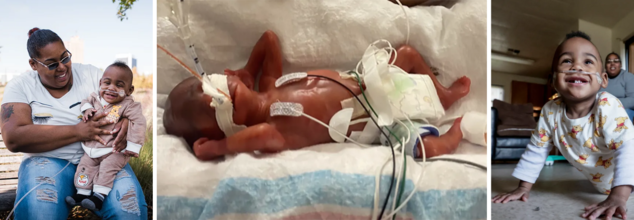- Health Conditions A-Z
- Health & Wellness
- Nutrition
- Fitness
- Health News
- Ayurveda
- Videos
- Medicine A-Z
- Parenting
- Web Stories
Important Vitamins For Teenagers: Top Nutritional Needs During Adolescence

Adolescence is a period of rapid growth and development, making proper nutrition vital for teenagers. Essential vitamins play a significant role in supporting various bodily functions, from bone growth to immune system strength. Ensuring teens receive adequate vitamins through their diet can aid in their overall health, energy levels, and cognitive function.
The teenage years are marked by increased nutritional demands. Vitamins A, B, C, D, E, and K are particularly important during this stage of life. These vitamins support everything from vision and skin health to energy production and immune function.
For example, vitamin A is crucial for vision and immune health, while vitamin D is essential for bone growth and calcium absorption. By understanding the role of these vitamins, parents can help their teens make informed dietary choices.
Essential Vitamins for Teenagers
To ensure that teenagers get the necessary vitamins, focus on incorporating a variety of nutrient-rich foods into their daily meals. This not only supports their physical health but also their mental and emotional well-being. Here are some essential vitamins and how to include them in a teenager's diet:Vitamin A: Found in carrots, sweet potatoes, and spinach, this vitamin is important for vision and immune function.
Vitamin B: Whole grains, meat, eggs, and dairy products are rich in B vitamins, which help with energy production and brain function.
Vitamin C: Citrus fruits, strawberries, and bell peppers provide vitamin C, crucial for immune health and skin repair.
Vitamin D: Fatty fish, fortified dairy products, and exposure to sunlight help with vitamin D, necessary for bone health.
Vitamin E: Nuts, seeds, and green leafy vegetables are good sources of vitamin E, which acts as an antioxidant and supports skin health.
Vitamin K: Found in broccoli, kale, and Brussels sprouts, vitamin K is essential for blood clotting and bone health.
To incorporate these vitamins into daily diets:
- Ensure meals are colorful and varied, including a wide range of fruits and vegetables.
- Combine protein, healthy fats, and whole grains with vitamin-rich foods to create balanced meals.
- Stock up on vitamin-rich snacks like nuts, seeds, fruits, and vegetables.
- Teach teens about the importance of vitamins and encourage them to make healthy food choices.
With Less than 1% Survival Chance, The Baby Born At 21 Weeks Survives, Breaks World Record

Credits: Andrea Mabry, The University of Alabama at Birmingham, and Butch Dill—Associated Press
A baby is considered fully developed and full-term at 39 weeks of gestation. A baby can be born anywhere between 37 and 42 weeks and can still be considered full-term. This period helps in baby's organ development like brain, lungs, and liver. It also reduces baby's health risks, promotes a better brain development and helps with other cognitive activities.
However, under certain circumstances, premature babies are also born. However, when a baby is born at 24 weeks or later, the baby has chance to survival and this chance increases with each additional week of gestation. However, babies who are born before 24 weeks face a high risk of mortality and potential long-term health issues.
A baby born before 22 weeks has a survival rate of 6%. So if a baby born in 21 weeks survives, it is no less than a miracle.
This is the story of one such miracle that happened where a baby, who had less than 1% chance of survival is now thriving and has broken the world record.
"Defied All Scientific Odds"
This is from the year 2020 when at 21 weeks, in Alabama, the most premature baby in the world, as per the Guinness World Records, was born.
Curtis Means and his twin sister, C'Asya Means, were born on July 5, 2020, at the University of Alabama at Birmingham (UAB) Hospital. Delivered at just 21 weeks and 1 day of gestation—132 days premature—the twins faced overwhelming odds, with UAB estimating their chance of survival at less than 1%. According to Guinness World Records, they were born nearly 19 weeks early.
"Numbers show that babies born so young have little to no chances of survival," said Dr. Brian Sims, a professor of pediatrics at the UAB who was the on-call physician when the twins' mother, Michelle Butler. The doctor's statement is part of UAB's official statement.
However, C'Asya did not respond to treatment and died the day after birth, but Curtis' heart rate and oxygen levels started to improve.
"We have never been able to bring a baby that young to the neonatal intensive care unit, so [Curtis] was literally the first of his kind," Sims told Guinness World Records. We were in uncharted territory."
Curtis received constant medical care that helped him breathe. His body temperature was also regulated and other care, including enough nutrition intakes were maintained. It was in about three months, when the doctors were finally able to take him off a ventilator.
Dr Colm Travers, an assistant professor in the Division of Neonatology said in a statement, "Curtis defied all scientific odds." Indeed he did. Age and birth weight are two of the most important factors in determining a newborn’s chances of survival, he explained. The odds are also higher if the baby is female, not part of a multiple birth, and if the mother received steroids before delivery to aid lung development—none of which applied in Curtis’s case. Yet, Curtis survived.
How The Baby Survived
At birth, Curtis weighed just 14.8 ounces (420 grams)—roughly one-seventh the weight of an average full-term newborn, according to Guinness World Records. Despite the odds, he grew stronger each day and was discharged from the hospital around nine months later, supported by medication, a feeding tube, and bottled oxygen.
After celebrating his first birthday, Curtis—affectionately nicknamed "Poodie" by his family—was officially recognized by Guinness World Records as the most premature surviving baby.
Six months after his discharge, Curtis’ medical team gathered outside the University of Alabama at Birmingham hospital to surprise his mother with the Guinness World Record certificate. The previous record holder, Richard Hutchinson, had been born just a month earlier, on June 5, 2020, at 21 weeks and 2 days.
Expecting? Here's What The New Gestational Diabetes Testing Rules Mean For You

Credits: Canva
In a significant update to maternal health care, Australia is introducing new national guidelines on how pregnant women are tested for gestational diabetes.
The changes, released by the Australasian Diabetes in Pregnancy Society and published in the Medical Journal of Australia, mark the first major update to gestational diabetes screening in over a decade. These revised guidelines are expected to impact more than 280,000 pregnant women annually, streamlining care, reducing overdiagnosis, and focusing medical resources where they are most needed.
What Is Gestational Diabetes and Why Is Testing Important?
Gestational diabetes mellitus (GDM) is a temporary form of diabetes that occurs during pregnancy. It’s defined by high blood glucose (sugar) levels that are first detected while a woman is pregnant. In Australia, GDM affects nearly one in five pregnancies and has short- and long-term health implications for both mother and baby.
Though GDM usually resolves after delivery, women who develop it are seven times more likely to later develop type 2 diabetes. Identifying and managing GDM is essential because untreated cases increase the risk of:
Macrosomia (a baby born significantly larger than average), which can lead to birth complications and higher rates of caesarean sections
Pre-eclampsia, a dangerous condition involving high blood pressure and potential organ damage
Premature birth and other serious outcomes
Moreover, the screening process offers a gateway for introducing long-term health interventions like dietary advice, physical activity plans, and future diabetes prevention programs.
Why Are the Guidelines Changing?
While GDM screening and treatment are beneficial for many women, a one-size-fits-all approach has downsides. The new guidelines aim to balance the benefits of early detection with the potential harms of overdiagnosis. Studies and patient feedback have highlighted several concerns with the current system:
Women report stress, shame, and stigma after diagnosis
Limited access to specialist care and nutrition support
Some women adopt overly restrictive diets without professional guidance
Others are forced to change their maternity care provider or place of delivery due to a high-risk classification
The aim is to reduce unnecessary interventions for women at low risk, while enhancing care for those who truly need it.
What Exactly Is Changing?
The revised recommendations result from a broad review of current research and expert input from medical professionals and consumers. Here are the key updates:
Universal Screening Remains – But With Adjustments
All pregnant women without a prior diabetes diagnosis will still undergo routine screening between 24 and 28 weeks using the Oral Glucose Tolerance Test (OGTT). This test involves:
- Fasting overnight
- A baseline blood test
- Drinking a sugary solution
- Two follow-up blood tests over two hours
However, fewer women will undergo multiple OGTTs during pregnancy. Early testing will be more targeted based on risk.
Early Testing for High-Risk Women
Women with risk factors will be screened earlier in pregnancy, ideally between 10 and 14 weeks. The approach includes:
An HbA1c test (a non-fasting blood test that gives an average of blood sugar levels over the past 2–3 months) in the first trimester for women with risk factors such as:
- High body mass index (BMI)
- Previous large baby
- History of gestational diabetes
If results show high HbA1c or there’s a history of GDM, women may undergo an OGTT early in pregnancy.
Stricter Diagnostic Thresholds
The cut-off values for diagnosing GDM using the OGTT have been adjusted upward. This means only women with more clearly elevated glucose levels will be diagnosed. The goal is to avoid labeling borderline cases as diabetic when the risks and outcomes are minimal.
What Do These Changes Mean for Women?
The updated guidelines aim to make gestational diabetes care more precise and patient-centered:
- Fewer unnecessary diagnoses for women with mild or borderline glucose levels
- Improved access to services for those at higher risk
- Reduced stress and confusion from unclear diagnosis or overtreatment
- Stronger support systems for managing diet and physical activity safely
Importantly, women are encouraged to maintain open communication with their health care providers, especially if they have risk factors or symptoms like fatigue, excessive thirst, or frequent urination during pregnancy.
Screens, Genes, and First Steps: What Shapes Your Baby’s Mind

Credits: Canva
"What's Going On Inside The Baby's Brain?"
If you area a regular social media user, you have definitely come across a meme that reads the exact line and then is followed by clips of babies making a fuss. But, what if we tell you that you could actually know what is going on. Not just that, but these developmental milestone is what shapes their future.
The first two years of a baby’s life are nothing short of magical — and not just because of the first smiles or tiny giggles. It’s also the time when the brain is growing at lightning speed, forming the building blocks for everything from movement to memory, emotions to education. According to researchers at Cedars-Sinai Medical Center, this early brain development doesn’t just shape how a baby acts now, but how they’ll learn, behave, and stay healthy for the rest of their lives.
Let’s unpack what’s happening inside those rapidly growing baby brains — and why every cuddle, word, and interaction matters.
Brain Growth: Fast, Focused, and Full of Potential
In those first two years, a baby’s brain doesn’t just grow — it wires itself. Dr. Wei Gao, a neuroscientist leading brain imaging research at Cedars-Sinai, explains that the brain first develops the areas responsible for movement and senses (like seeing and touching). But very soon after, it’s the emotional and social areas that take center stage.
This is why the first year is so important for bonding. “You want to provide sensitive support to the baby so the baby can develop a secure attachment,” Gao explains. That attachment — those quiet moments of eye contact, soothing, and play — builds the emotional foundation for confidence, learning, and even future relationships.
Gao’s team has even mapped how parts of a child’s brain connect during early childhood. In a massive ongoing study, they’re tracking over 7,000 children from birth through age 10 to understand how environment and genetics shape brain wiring.
Too Much Screen, Too Little Growth?
Dr. Jane Tavyev Asher, director of Pediatric Neurology at Cedars-Sinai Guerin Children’s, warns about one major disruptor in the early years: screens. While the glow of a phone or tablet may keep a baby distracted, it can actually confuse the brain.
“When you expose that developing brain to rapidly changing images, it learns to focus on that — not on the real world,” Asher explains. That means less attention to slower, natural patterns like human speech, eye contact, and physical play — all key to learning to read, write, and think clearly later in life.
Genes and Brains
It’s not just nurture — nature plays a big role too. Dr. David Rowitch, deputy director of research at Cedars-Sinai Guerin Children’s, points out that nearly 80% of babies with a genetic condition show some neurological signs early on — whether it’s seizures, muscle weakness, or a brain structure difference visible on scans.
Modern genetic testing can now read a baby’s entire DNA — all 3 billion base pairs — offering clues not only about physical health, but also mental development. Combining this information with brain scans could help doctors catch problems early, intervene sooner, and even improve a child’s future school readiness.
Why Early Intervention Matters
The ultimate goal? To make sure no child falls behind. As Rowitch says, understanding how brain connections, genes, and environment come together helps us support each child — especially those at higher risk — to reach their full potential.
© 2024 Bennett, Coleman & Company Limited

